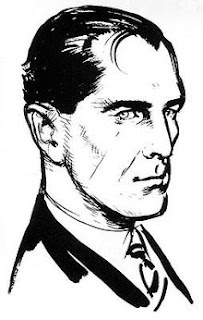I visited my in-laws over the Thanksgiving holiday and enjoyed a good dose of Cable TV. I'm a true crime junkie and fell in love with the Investigation Discovery channel. I turned my kids into true crime junkies too, as we watched several episodes of Homicide Hunter.
I find what drives people to commit violent crimes to be pretty fascinating. Also, as I'm crafting my next mystery, learning about the psychology of the criminal mind helps a lot.
If you're not familiar with the show Homicide Hunter, here's an article about it and star Joe Kenda from The Columbus Dispatch (by way of McClatchy-Tribune News Service) by Luaine Lee.
Retired homicide detective Joe Kenda is an unlikely TV star.
With straight gray hair, a hounded look in his eyes and a minimalist way of speaking, he probably wouldn’t succeed at a casting call.
Yet he stars on Investigation Discovery’s Homicide Hunter, which began a new season this month.
Kenda narrates re-enactments of the crimes he covered from his years on the police force in Colorado Springs, Colo.
“When I arrested somebody, I’d have a gun in one hand and a badge in the other,” he said. “I say very quietly: ‘My name is Kenda. I’m with the police department, and you’re under arrest for murder. If you don’t do what I say, I’m going to kill you right here and right now.’”
Kenda spent 19 years on the force, working his way up from patrolman to commander of the major-crime unit at the time of his retirement at age 52.
There was no magic, he said, to his solving 92 percent of assault cases.
“I’m a student of human nature. People do stupid things; they do. And if you watch them and observe them and talk to them and deal with them — hundreds of different people — you become a student of what they do. And that’s all this work is.”
Kenda said he could sense when he was being told the truth — or just a story.
“You know when you’re getting lied to and when you’re not, based on what ... (people) are telling you, because you know what people do. Even though this person believes he’s very different, he’s very much the same.”
Kenda didn’t envision doing police work. He and his wife of 45 years, Kathy, met at college in their native Pittsburgh, where he tried for a time to work for his dad’s trucking business. They had two children, a boy and a girl, and struggled financially.
Finally, he said, his wife gave him an ultimatum.
“I couldn’t make ends meet, and I’m really good at making ends meet,” said Kathy Kenda, a nurse. “If he wasn’t working, he was with the boys, golfing and stuff, and I was stuck with the two kids. So he came home, and I was drunk one night, and I said: ‘This has got to change. I never see you. You never see the kids.’
“He said, ‘OK, I’ve always wanted to be a policeman.’”
So he applied and was accepted on the force.
Kenda’s brief official appearances on television in Colorado are what prompted producer Patrick Bryant’s idea for Homicide Hunter.
When his query letter arrived, however, Kenda ignored it.
His wife insisted that he reply.
When he arrived for the tryout, Bryant instructed Kenda to talk to the camera about murder.
“So I did, for about an hour — whatever came into my head. I reached what I thought was a natural stopping place, and I stood up and said, ‘Is that what you had in mind?’
“Everybody’s standing there with their mouths open. And I’m thinking, ‘Well, this didn’t go well.’ Nobody said a word. I said, ‘Let me ask you again: Is that what you had in mind?’ ‘Oh, yeah.’ And here we are.”
I loved this show, and if you love true crime and learning about what makes people tick, this is definitely a program for you!
Have you ever seen Homicide Hunter? Thanks for visiting and have a great week!









